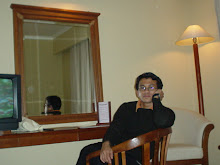Getting TV programming shown to the public can happen in many different ways. After production the next step is to market and deliver the product to whatever markets are open to using it. This typically happens on two levels:
1. Original Run or First Run – a producer creates a program of one or multiple episodes and shows it on a station or network which has either paid for the production itself or to which a license has been granted by the producers to do the same.
2. Syndication – this is the terminology rather broadly used to describe secondary programming usages (beyond original run). It includes secondary runs in the country of first issue, but also international usage which may or may not be managed by the originating producer. In many cases other companies, TV stations or individuals are engaged to do the syndication work, in other words to sell the product into the markets they are allowed to sell into by contract from the copyright holders, in most cases the producers.
First run programming is increasing on subscription services outside the U.S., but few domestically produced programs are syndicated on domestic FTA elsewhere. This practice is increasing however, generally on digital-only FTA channels, or with subscriber-only first run material appearing on FTA.
Unlike the U.S., repeat FTA screenings of a FTA network program almost only occur on that network. Also, Affiliates rarely buy or produce non-network programming that is not centred around local events.

Tidak ada komentar:
Posting Komentar